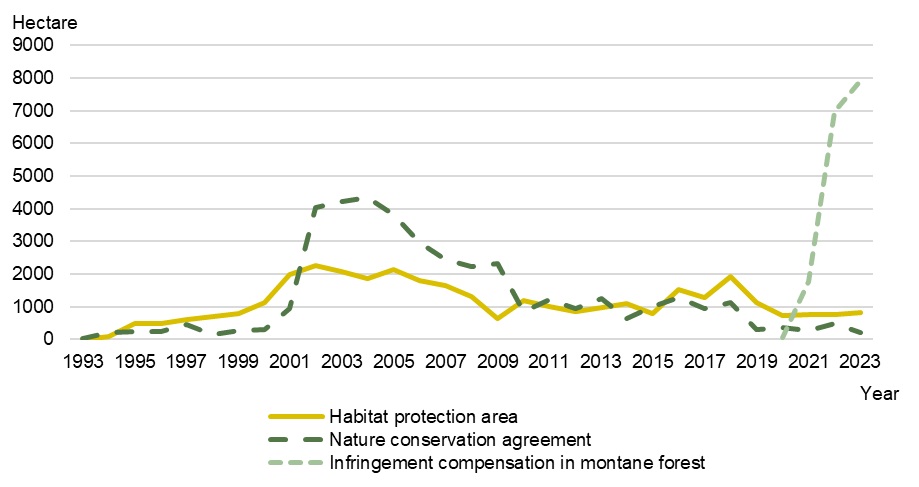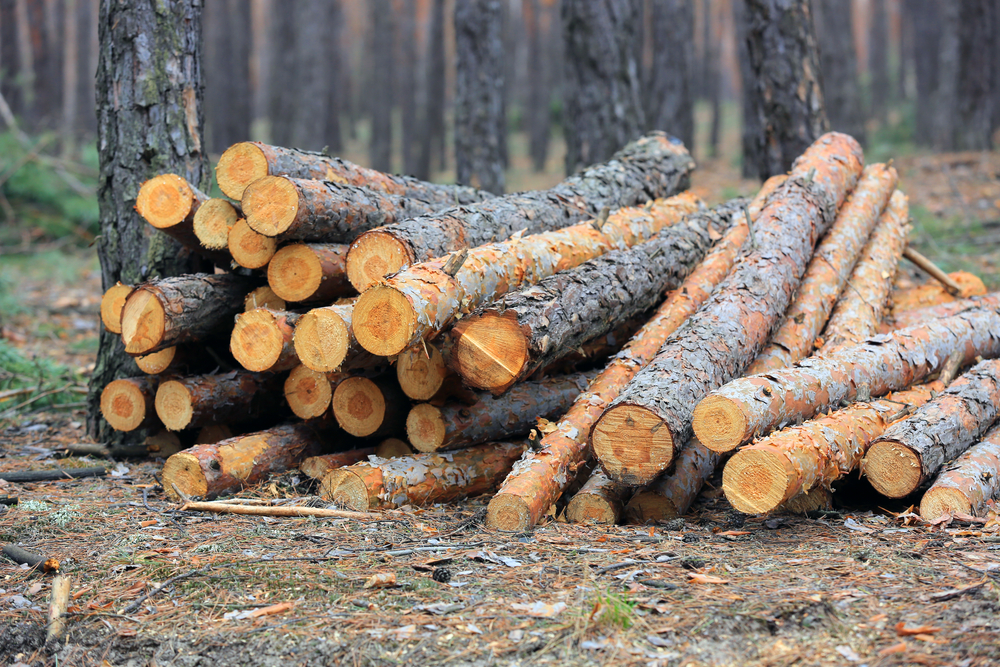In 2020, a legal process was concluded that resulted in the Swedish Forest Agency starting to pay out compensation for infringement to landowners who had been denied felling permission in montane forests. In 2020, only a few infringement compensation payments were made, but in subsequent years the number of payments increased sharply. The reason for this was a large increase in applications for felling permits in montane forests. In 2021, SEK 72 million ($6.9 million) was paid out in infringement compensation, in 2022 this was SEK 248 million ($23.8million) and by 2023 SEK 309 million ($29.7 million)was paid out to landowners who had been denied felling. In total, infringement compensation has been paid out for the denied felling of 16,700 hectares of forest land in the montane forests during the years 2020 to 2023.
Västerbotten county has had almost 62% of the infringement compensated forest land up to 2023, while 36% was in Jämtland county. The remaining 2% was distributed between the counties of Dalarna and Norrbotten.
Image: The Swedish Forest Agency's formal protection in the entire country along with infringement compensated montane forest land 1993-2023
New formal protection lowest since 1998
At the end of December 2023, there were just over 8 900 habitat protection areas totalling 34,800 hectares established by the Swedish Forest Agency. There were also around 5,500 signed nature conservation agreements with a total of 40,000 hectares.
810 hectares of habitat protection and 210 hectares of nature conservation agreements were added in 2023. Overall, this was the lowest level of newly formally protected areas by the Swedish Forest Agency since 1998. It is also the fifth consecutive year in which less than 1,500 hectares were formally protected. The years with the highest levels of new formation were during 2002 to 2005, when around 6,000 hectares per year were formally protected.
An important reason why the level has fallen in the 2020s is that the largest part of the appropriation has had to be reserved for compensation for infringement to landowners who apply for felling in montane forests, but where permits are often refused.
SEK 3.7 billion ($298 million) so far
A total of just over SEK 3.1 billion ($298 million) has been used for the creation of habitat protection areas and SEK 565 million ($54.3 million) for nature conservation agreements since 1993. On average, compensation in 2023 was around SEK 185,000 ($17.800) per hectare for habitat protection, which is the highest level to date. The increase in property prices means that the level of compensation rises over time.
The nature conservation agreements had an average compensation of SEK 47,000 ($4.500) per hectare in 2023, which is an increase from previous years. The compensation is affected by, for example, the timber value of the land, which means that it can vary between years depending on where in the country the new nature conservation agreements are located. The length of the agreement also has an impact, with shorter agreements generally having lower compensation. Many newly formed short nature conservation agreements can therefore reduce the average compensation for a single year.
